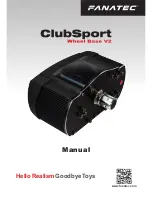
LANDI RENZO S.p.A.
‘SE 81 SIC’ LPG REGULATORS INSTALLATION AND ADJUSTMENT MANUAL
7 / 19
Legend
Specification
Thank you for purchasing a
LANDI RENZO
pressure regulator type
‘SE 81 SIC’
, the reliable
and technologically advanced device to install a
LPG conversion system on vehicles with catalytic
converter, injection system, carburettor and turbo-
charger.
Correctly installed, your pressure regulator will
give many years of excellent performance.
To ensure that you achieve peak performance
from the conversion system, please read this
installation and setting guide thoroughly.
LEGEND (Fig. 1)
A) Water outlet union for connection to a water
coolant system return duct
B) Water inlet union for connection to a water
coolant system delivery duct
C) Gas outlet connector
D) Idle speed pipe
(to position always at the
same direction of gas outlet connector)
E) Idle speed setting screw
F) Plus/minus contact for idle speed solenoid
valve
G) Sensitivity screw
H) Regulator bleeder plug
I) Gas inlet union
1. TECHNICAL SPECIFICATION
Electronic control device to reduce the LPG
pressure and vaporize it allowing a regular flow of
gas whenever the engine requires it.
It is equipped with two LPG reduction stages that
allow stability at both high and low pressures.
The passage of LPG from the liquid to the gas
phase takes place by a drop in pressure and by
absorption of the heat taken from parts of the
regulator, heated with the liquid of the engine
cooling circuit.
The flow of gas necessary for engine idling has a
positive pressure from the first stage and is
activated by means of a gas pipe separated from
the main flow. It includes an electronic starting
device with a built-in safety system that trips and
shuts off the gas solenoid valves if the engine is
switched off or even stalled.
Operation
SPECIFICATION:
Regulator type: 2 stages with electronic starting
device and idling at positive pressure
Use: automotive (suitable for vehicles with
catalytic converter, injection, carburettor and
turbo-charger)
Type of fluid: LPG (liquefied petroleum gas)
Body: GDALSI 13 Fe UNI 5079
Heating: engine cooling circuit liquid
Test pressure: 45 bar
First stage adjustment pressure: 0.8 bar
Power supply: 12V DC
Coil power capacity: 18W
VERSIONS:
SE 81 SIC (standard): up to 130 HP
SE 81 SIC (oversize): from 130 HP to 250 HP
SE 81 SIC (super oversize): over 250 HP
SE 81 SIC Turbo: for turbo-charged engines up to
200 HP
2. REGULATOR OPERATION (Fig. 2)
L.P.G. passes the gas inlet union (1) and valve (2)
before entering the first-stage chamber (3). Gas
flow is metered by the gas on diaphragm. (4). This
pressure causes a dilation which overcomes the
resistance of spring (5) and operates lever (6)
which controls the opening and closing of the first-
stage valve (2).
Via gas outlet (7) the engine intake system
generates vacuum in the second stage chamber
and causes diaphragm (8) to move axially.
Being connected to level (9), the diaphragm
controls valve (10) opening thus allowing the gas
to reach the second-stage chamber via duct (11)
and then the engine via gas outlet (7). Valve (10)
and lever (9) are sealed when spring (12) is
adequately set.
The starting and idle-speed device consists of
solenoid valve (13) which is controlled via an
electronic device. Plunger (14) moves thus leaving
hole (15) open. The gas coming from the first-
stage chamber (3) flows out of this hole thus
allowing the engine to run at idle speed. If the
engine stops, the coil becomes de-energized and
plunger (14) closes outlet hole (15). Idle-speed
setting is achieved via adjuster (16).
At starting, the electronic device energizes coil
(13) so that plunger (14) leaves hole (15) open
thus letting the required amount of gas through.





































